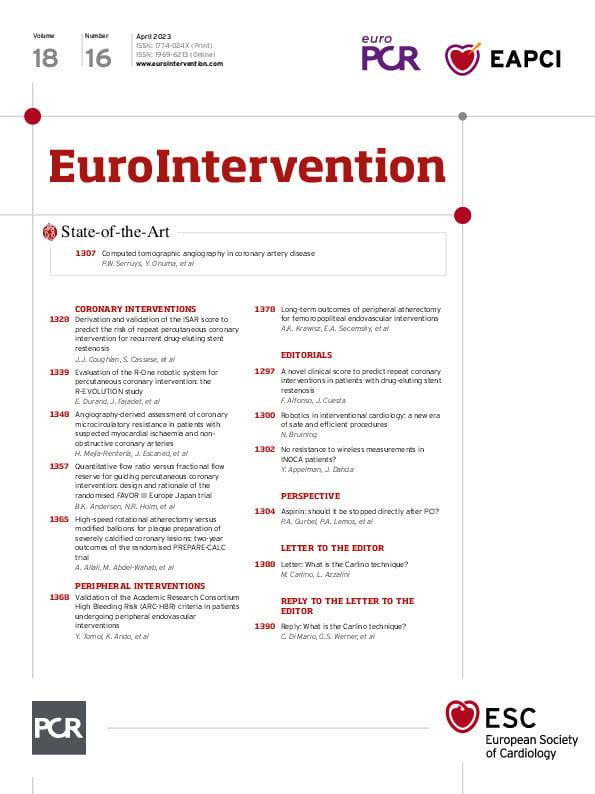We thank Drs Carlino and Azzalini for having offered,
in their Letter to the Editor
1, a detailed description of the rationale, indications and practical application of the Carlino technique that nicely complements the necessarily incomplete summary presented in our State-of-the-Art Review
2. Our aim in this paper was to address problems, such as patient selection for chronic total occlusion (CTO) recanalisation, that are of interest to the entire interventional community, and this left limited space for describing the more technical aspects. The letter by Carlino and Azzalini and its accompanying figure highlight the options offered by this technique in antegrade recanalisation. This is a welcome addition because the Carlino technique, often mentioned in talks on CTO, is not standardised and is rarely adopted in the high-volume centres that contribute to large registries. There is still great reluctance from most operators to inject antegradely into the occluded segment because of the risk that an uncontrolled enlargement of the dissection segment would preclude alternative antegrade options. This should always be kept in mind before embarking on this technique. Reports of controlled results and time will help to decide whether the Carlino technique has a role in the treatment of particularly complex CTO lesions.
Conflict of interest statement
C. Di Mario is the recipient of institutional research grants from Amgen, Abbott Vascular, CLS Behring, Boston Scientific, Chiesi Pharmaceuticals, Daiichi Sankyo, Edwards Lifesciences, Medtronic, Shockwave Medical, and Philips Volcano.K. Mashayekhi reports consulting/speaker/proctoring honoraria from Abbott Vascular, Abiomed, Asahi Intecc, AstraZeneca, Biotronik, Boston Scientific, Cardinal Health, Daiichi Sankyo, Medtronic, Shockwave Medical, Teleflex, and Terumo.R. Garbo has received consulting/speaker/proctoring honoraria from Abbott Vascular, Asahi Intecc, Boston Scientific, IMDS, Philips Volcano, Teleflex and Terumo.S.A. Pyxaras reports consulting/speaker/proctorship honoraria from Abiomed, AstraZeneca, Asahi Intecc, and Boston Scientific. Gerald Werner reports speaker honoraria from Asahi Intecc, Bayer, Biotronik, Daiichi Sankyo, Shockwave Medical, Siemens Healthineers, and Terumo. All authors, except N. Ciardetti, are members of the EuroCTO Club that receives annual grants to support its congress and other activities from Abbott, Asahi Intecc, Biotronik, Boston Scientific, Braun, IMDS, OrbusNeich, Philips Volcano, Shockwave, SIS Medical, Teleflex, and Terumo. N. Ciardetti has no conflicts of interest to report.

